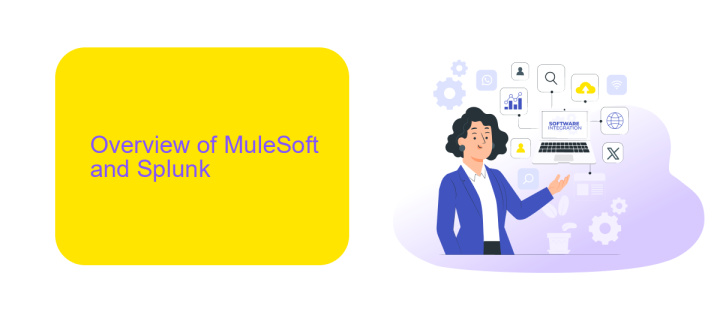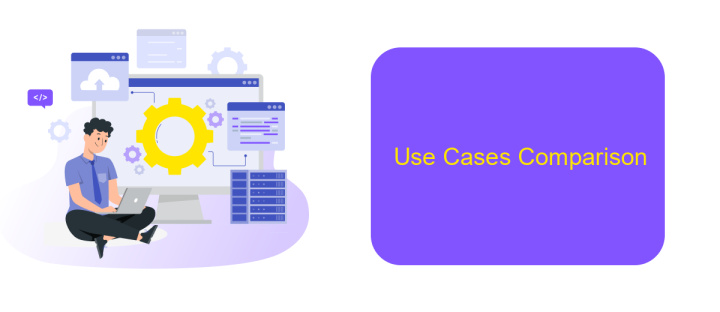MuleSoft Vs Splunk
In today's rapidly evolving technological landscape, businesses seek robust tools to streamline operations and gain actionable insights. MuleSoft and Splunk are two powerful platforms that cater to these needs but in distinct ways. This article delves into a comparative analysis of MuleSoft, an integration and API management tool, versus Splunk, a leader in data analytics and monitoring solutions.
Introduction
In today's rapidly evolving digital landscape, enterprises are increasingly relying on advanced tools to enhance their operational efficiency and data management capabilities. Two prominent players in this domain are MuleSoft and Splunk. While MuleSoft specializes in integration and API management, Splunk excels in data analytics and monitoring. Understanding the distinct features and benefits of each platform is crucial for organizations aiming to optimize their technology stack.
- MuleSoft: Focuses on seamless integration and API management, enabling businesses to connect disparate systems and applications.
- Splunk: Provides robust data analytics and monitoring solutions, helping organizations gain valuable insights from their data in real-time.
- ApiX-Drive: An additional service that can complement both MuleSoft and Splunk by automating integrations and streamlining data flow between various applications.
Both MuleSoft and Splunk offer unique advantages that cater to different aspects of enterprise needs. MuleSoft's strength lies in its ability to facilitate smooth integrations across various platforms, while Splunk excels in extracting actionable insights from complex data sets. By leveraging these tools, along with services like ApiX-Drive, businesses can achieve a more cohesive and efficient operational ecosystem.
Overview of MuleSoft and Splunk

MuleSoft is a leading integration platform that enables businesses to connect applications, data, and devices seamlessly. It provides a unified solution for API management, data integration, and application integration, making it easier for organizations to automate processes and streamline operations. MuleSoft's Anypoint Platform offers a comprehensive suite of tools that allows developers to design, build, and manage APIs and integrations efficiently. Its robust architecture supports a wide range of integration patterns and protocols, ensuring flexibility and scalability for enterprises of all sizes.
Splunk, on the other hand, specializes in operational intelligence and data analytics. It collects, indexes, and analyzes machine-generated data in real-time, providing valuable insights into system performance, security, and business operations. Splunk's powerful search and visualization capabilities enable users to monitor and troubleshoot IT infrastructure, detect security threats, and gain actionable intelligence from vast amounts of data. While both MuleSoft and Splunk serve different primary functions, they can be complementary in a tech stack, with MuleSoft handling integrations and Splunk offering deep analytics and monitoring.
Key Differences Between MuleSoft and Splunk

MuleSoft and Splunk serve distinct purposes in the tech ecosystem, each offering unique capabilities for different business needs. MuleSoft specializes in integration solutions, enabling seamless connectivity between various applications, data, and devices. In contrast, Splunk focuses on data analysis, providing powerful tools for monitoring, searching, and visualizing machine-generated data.
- MuleSoft excels in API management and integration, facilitating the creation and management of APIs to connect disparate systems.
- Splunk is designed for big data analytics, offering robust features for log management, data indexing, and real-time monitoring.
- MuleSoft's Anypoint Platform provides a unified solution for full lifecycle API management, whereas Splunk's platform is geared towards operational intelligence and security analytics.
- For businesses needing integration services, tools like ApiX-Drive can complement MuleSoft by automating data transfer between various applications without requiring extensive coding.
- Splunk's strength lies in its ability to handle large volumes of machine data, making it ideal for IT operations, security, and compliance reporting.
In summary, while MuleSoft is the go-to solution for API-led connectivity and integration projects, Splunk is best suited for organizations that require advanced data analytics and real-time insights. Understanding these key differences can help businesses choose the right tool for their specific needs.
Use Cases Comparison

When comparing MuleSoft and Splunk, it's essential to understand their distinct use cases. MuleSoft is primarily focused on API management and integration, making it a powerful tool for connecting different systems and services. On the other hand, Splunk excels in data analysis and monitoring, providing insights into machine data and IT operations.
MuleSoft is ideal for organizations looking to streamline their integration processes. It offers robust tools for API creation, management, and monitoring, ensuring seamless communication between various software applications. Splunk, conversely, is perfect for businesses that need to analyze large volumes of data in real-time, offering powerful search, monitoring, and reporting capabilities.
- MuleSoft: API management, system integration, and communication.
- Splunk: Data analysis, IT monitoring, and real-time insights.
For those seeking to simplify their integration processes, services like ApiX-Drive can be invaluable. ApiX-Drive offers automated integration solutions, allowing businesses to connect their apps and services effortlessly. This can complement MuleSoft's capabilities, providing a more comprehensive integration strategy. Meanwhile, Splunk remains a go-to solution for data-driven decision-making and operational intelligence.
Conclusion
In conclusion, both MuleSoft and Splunk offer robust solutions for different aspects of enterprise needs. MuleSoft excels in providing comprehensive integration capabilities, allowing businesses to seamlessly connect various applications and data sources. On the other hand, Splunk stands out with its powerful data analytics and monitoring tools, which are invaluable for gaining insights and ensuring system reliability.
When considering integration services, ApiX-Drive can be a valuable addition to your toolkit. It simplifies the process of connecting different applications and automating workflows, complementing the strengths of both MuleSoft and Splunk. Ultimately, the choice between MuleSoft and Splunk should be driven by your specific organizational needs, whether you prioritize seamless integrations or advanced data analytics. By leveraging the right tools, businesses can achieve greater efficiency and insight, driving overall success.
- Automate the work of an online store or landing
- Empower through integration
- Don't spend money on programmers and integrators
- Save time by automating routine tasks
FAQ
What is the primary purpose of MuleSoft and Splunk?
Can MuleSoft and Splunk be used together?
Which industries benefit most from using MuleSoft and Splunk?
Do MuleSoft and Splunk require specialized skills to operate?
Are there services available to help implement and automate integrations with MuleSoft and Splunk?
Do you want to achieve your goals in business, career and life faster and better? Do it with ApiX-Drive – a tool that will remove a significant part of the routine from workflows and free up additional time to achieve your goals. Test the capabilities of Apix-Drive for free – see for yourself the effectiveness of the tool.


